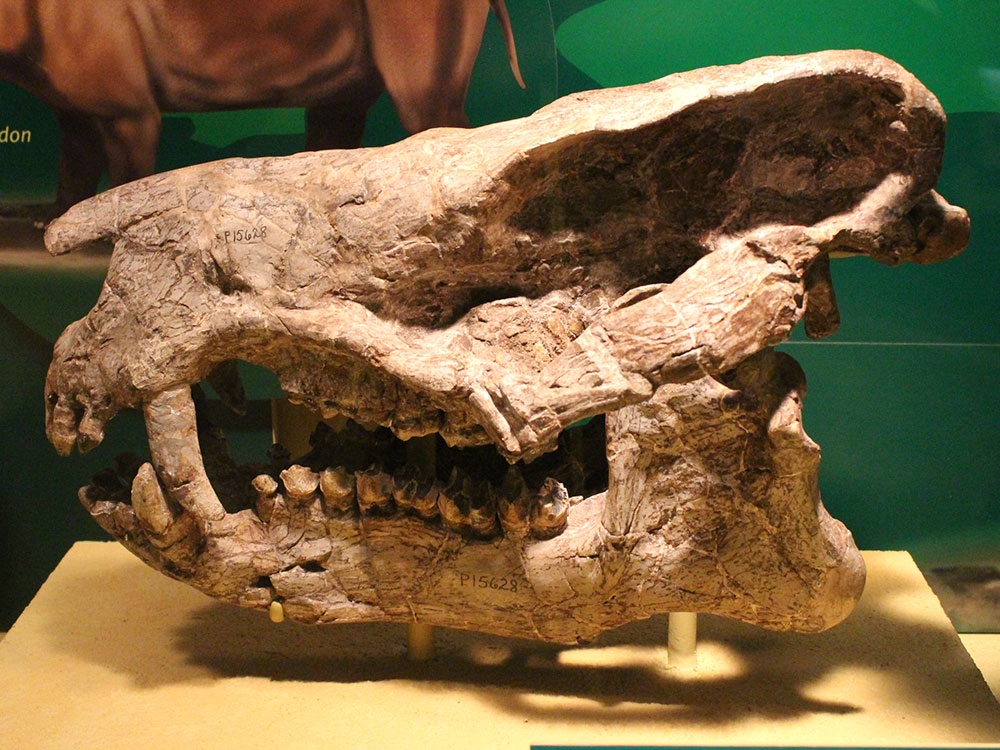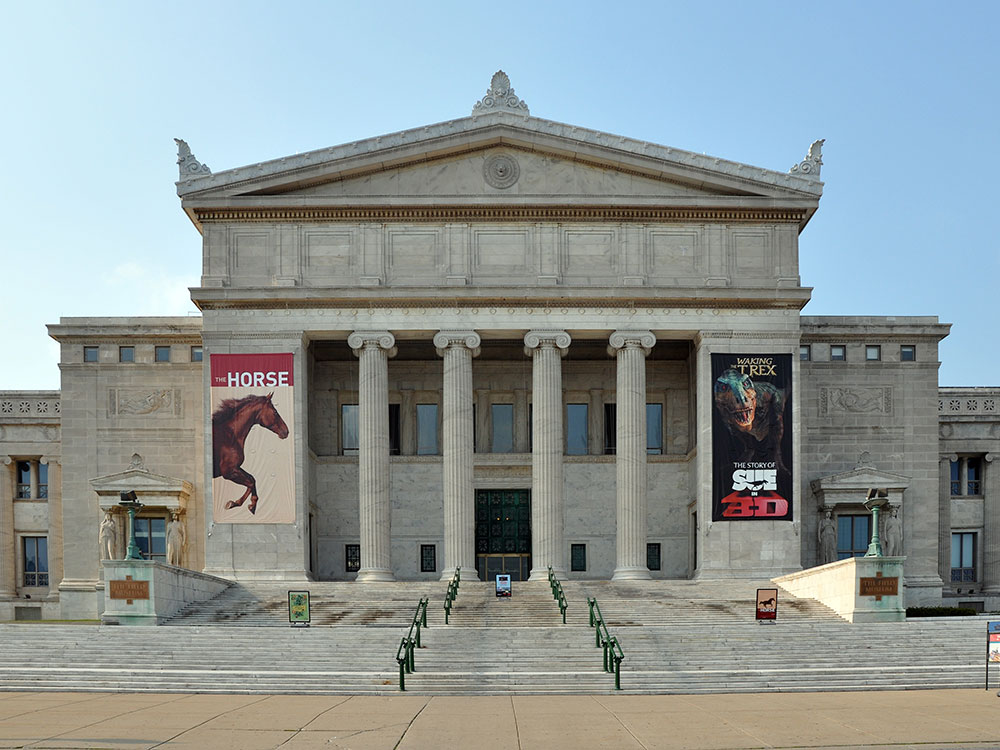Popular natural-history museum due to its extensive scientific-specimen and artifact collections and is one of the largest such museums in the world
General Information
How to Get There
Overview
The Field Museum of Natural History (FMNH), also known as The Field Museum, is a natural history museum in Chicago, Illinois, and is one of the largest such museums in the world. The museum is a popular natural-history museum for the size and quality of its educational and scientific programs, as well as due to its extensive scientific-specimen and artifact collections. The permanent exhibitions, which attract up to two million visitors annually, include fossils, current cultures from around the world, and interactive programming demonstrating today's urgent conservation needs. The museum is named in honor of its first major benefactor, the department-store magnate Marshall Field. The museum and its collections originated from the 1893 World's Columbian Exposition and the artifacts displayed at the fair.
The museum maintains a temporary exhibition program of traveling shows as well as in-house produced topical exhibitions. The professional staff maintains collections of over 24 million specimens and objects that provide the basis for the museum's scientific-research programs. These collections include the full range of existing biodiversity, gems, meteorites, fossils, and rich anthropological collections and cultural artifacts from around the globe. The museum's library, which contains over 275,000 books, journals, and photo archives focused on biological systematics, evolutionary biology, geology, archaeology, ethnology and material culture, supports the museum's academic-research faculty and exhibit development. The academic faculty and scientific staff engage in field expeditions, in biodiversity and cultural research on every continent, in local and foreign student training, and in stewardship of the rich specimen and artifact collections. They work in close collaboration with public programming exhibitions and education initiatives.
Animal exhibitions and dioramas such as Nature Walk, Mammals of Asia, and Mammals of Africa that allow visitors an up-close look at the diverse habitats that animals inhabit.
Evolving Planet follows the evolution of life on Earth over 4 billion years. The exhibit showcases fossils of single-celled organisms, Permian synapsids, dinosaurs, extinct mammals, and early hominids.
Inside Ancient Egypt offers a glimpse into what life was like for ancient Egyptians. Twenty-three human mummies are on display as well as many mummified animals. The exhibit features a three-story replica (featuring two authentic rooms with 5,000-year-old hieroglyphs) of the mastaba tomb of Unas-Ankh, the son of Unas (the last pharaoh of the Fifth Dynasty). Also displayed are an ancient marketplace showing artifacts of everyday life, a shrine to the cat goddess Bastet, and dioramas showing the afterlife preparation process for the dead.
The Ancient Americas displays 13,000 years of human ingenuity and achievement in the Western Hemisphere, where hundreds of diverse societies thrived long before the arrival of Europeans. In this large permanent exhibition visitors can learn the epic story of the peopling of these continents, from the Arctic to the tip of South America.
Cultural exhibitions include sections on Tibet and China, where visitors can view traditional clothing. There is also an exhibit on life in Africa, where visitors can learn about the many different cultures on the continent, and an exhibit where visitors may "visit" several Pacific Islands. The museum houses an authentic 19th-century Māori Meeting House, Ruatepupuke II, from Tokomaru Bay, New Zealand.
The Grainger Hall of Gems consists of a large collection of diamonds and gems from around the world, and also includes a Louis Comfort Tiffany stained glass window. The Hall of Jades focuses on Chinese jade artifacts spanning 8,000 years.
The Underground Adventure gives visitors a bug's-eye look at the world beneath their feet. Visitors can see what insects and soil look like from that size, while learning about the biodiversity of soil and the importance of healthy soil.
DNA Discovery Center - Visitors can watch real scientists extract DNA from a variety of organisms. Museum goers can also speak to a live scientist through the glass every day and ask them any questions about DNA.
McDonald's Fossil Prep Lab - The public can watch as paleontologists prepare real fossils for study.
The Regenstein Pacific Conservation Laboratory - 1,600-square-foot (150 m2) conservation and collections facility. Visitors can watch as conservators work to preserve and study anthropological specimens from all over the world.
On May 17, 2000, the Field Museum unveiled Sue, the largest T. rex specimen discovered at the time. Sue has a length of more than 40.5 feet (12.3 m), stands 13 feet (4.0 m) tall at the hips, and has been estimated at between 8.4-14 metric tons (9.26-15.4 short tons) as of 2018. The specimen is estimated to be 67 million years old. The fossil was named after the person who discovered it, Sue Hendrickson.
This article uses material from the Wikipedia article "Field Museum of Natural History", which is released under the Creative Commons Attribution-Share-Alike License 3.0

